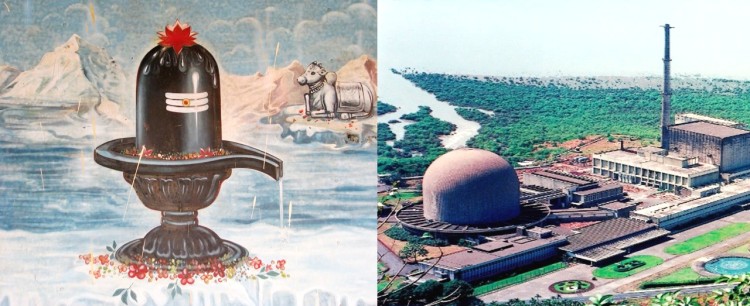
“So what are your plans for the Year End?”,I asked a friend. “Oh, I am going to the States. My cousins stay there. I will either visit the one of the East Coast, or the one on the West Coast”. “That is nice. And how about you?” I asked another friend. “I will be in Canada this time. Pammi Aunty and Hiroo Uncle stay in Toronto. We haven’t visited them for years”. “That is nice too. And you?”, I asked a third friend.” Don’t know man. We will either go to Singapore-Malaysia, or maybe Dubai. My wife’s brother has his family there”. “What about you?”, they asked me.
My response was 😓
I came back home and quietly opened Google Maps. Anywhere outside of India at this peak tourist season was absolutely out of question.
North India? No, I had been there last December. It was kind of cold for a road trip. North East then? Too cold again. How about Rajasthan? Too expensive. The NRIs had probably booked the whole state as a part of their Biennial visit to India. Kerala? The Mallus had exercised their right of way to fly in from the ‘Gelf’ for Christmas and the New Years. Not even the oil reserves there could bring down the flight ticket prices below 10k.
I zoomed in on Maharashtra. This seemed to be a better bet. No flight tickets, just take your motorcycle and ride out. I was googling for road trips in Maharashtra when an advertisement popped up. 3 Jyotirlingas with Shirdi and Shani-Shingnapur. I let the latter two names pass, the first intrigued me though.
I have always been fascinated by Shiva. Less from a religious aspect, more from a conceptual one. An ascetic and a householder, a loving husband and a doting father, short tempered yet a perennial meditator, detached from material world, yet very much a part of many people’s daily life. He has been the original ‘Complete Man’ for ages, much before Raymond coined the term as a marketing gimmick.
The idea caught my fancy in a second. I got possessed by the trip. A usual fervor of planning later, I had a proper route laid out. And what a ripper of a road trip it turned out to be?
I travelled about 1400 kms across the state of Maharashtra, visited 4 Shiva Jyotirling temples and one Goddess Temple, a few ancient and historical monuments and structures and natural lakes, stayed in small towns like Jalna and Parbhani that I had read about only in my school text books, and in the process roamed around in over 10 districts of Marathwada and Khandesh Region.
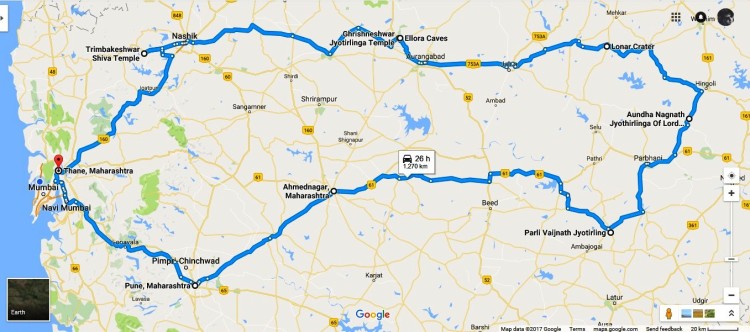
The Jyotirling temples were to act as reference points for my road journey. The idea was to visit the temples, along with other famous places on the way.
Once the trip was planned, I started to delve deeper and deeper into the secrets of Shiva.
Jyotirlingam
Before we proceed to the temple visits, let us have a quick understanding of the concept of Shiv Lingam, or a Jyotirlingam in particular.
It is downright primitive to accept a very popular belief that a Shiv lingam is a representation of a phallus and a vagina, meaning a representation of sexual union of Shiva and Shakti (Male and Female). It may still represent this union, but definitely not from a sexual perspective.
Firstly it makes no physical sense since it is turned upside down, and the dome symbolizing the phallus comes out. Secondly, if everything is to be linked to sexuality, then the Christian Holy Cross can be easily forced to symbolize a male and female union, and so can the Star of David in Judaism. No, there had to be more to a Shiv Lingam than pure carnal desires of the human race.
The word Jyotirlingam is a Sanskrit Sandhi (joint words) of two words- Jyoti meaning light and lingam meaning a form or a pillar in this case. So a Jyotirlingam is a pillar of light.
A mythological take on Jyotirlingam
We all know that Brahma, Vishnu and Mahesh form the holy trinity of Hindu gods, and symbolize creation, preservation and destruction respectively.
Once Brahma and Vishnu had an argument on who is the greatest amongst them. They approached Shiva, who transformed himself into an infinite ray of Light. He asked Brahma and Vishnu to go in opposite directions, and come back when they find the upper and lower end of the pillar of light.
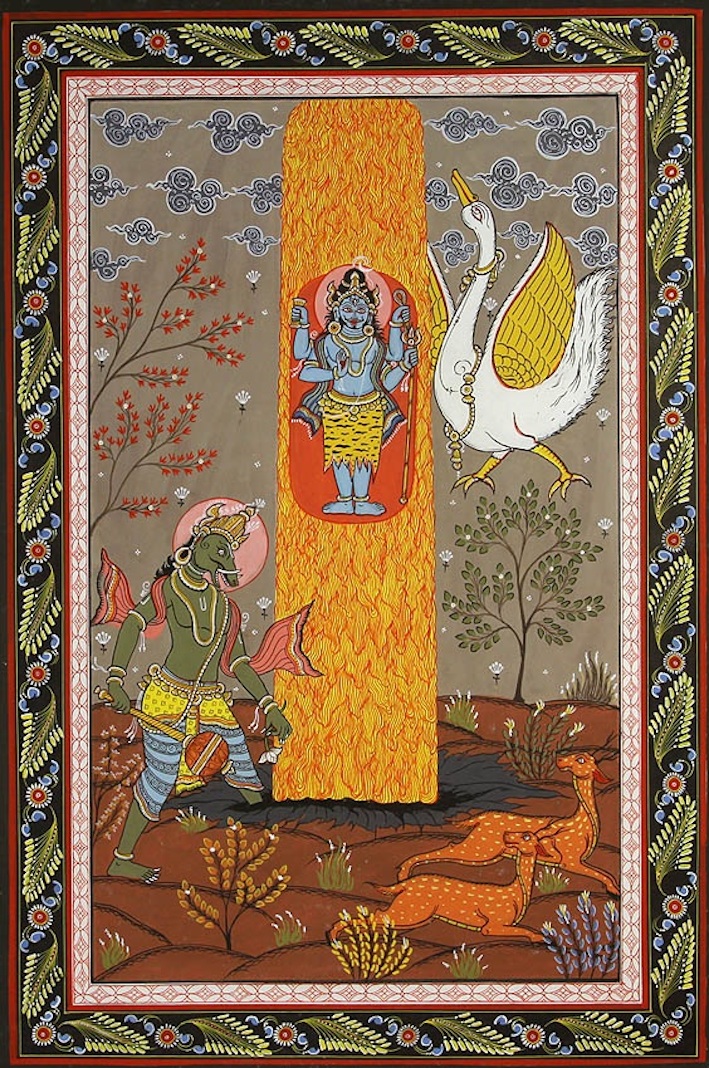
Their search went on for years, when Lord Vishnu finally realized the infinite greatness of Lord Shiva and bowed down to him. Brahma was still filled with arrogance. Once during his search, he met a flower Ketaki, and he asked her if she would testify for him in front of Shiva. When she agreed, they went to Lord Shiva together and Brahma said he had found the head of the pillar of light, and that Ketaki was a proof for the same.
This dishonesty enraged Lord Shiva, and he cursed Brahma that he would never be worshipped like other Hindu gods, and Ketaki flower will never be a part of Hindu puja rituals. Thus we still find that there are hardly any Brahma Temples, as opposed to those of other Hindu gods. A few exceptions are the Brahma Temple at Pushkar, Rajasthan, but it has a different legend to it.
Difference between Shivlingam and a Jyotirlingam
Both are a representation of Lord Shiva. However, a Jyotir Lingam is considered to be Swayambhu i.e the one which manifested itself, meaning Lord Shiva himself created it. A Shivl Lingam is a more generic representation, and is installed in temples by human beings.
A scientific take on Shivlingam or a Jyotirlingam
We have seen that ‘Jyoti’ means light. Light is a form of energy. So we can say that a Jyotir Lingam is a symbol of Energy.
Let us look at some of the characteristics of a Shiva Lingam
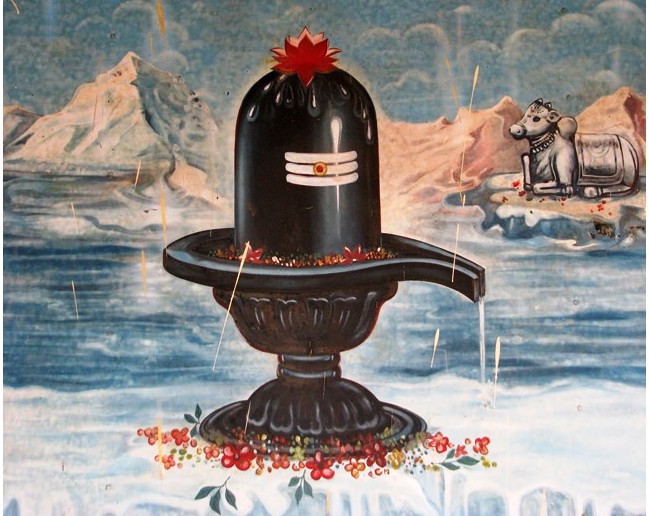
- The structure of a Lingam is divided into 2 parts i.e the dome and a base on which the dome rests
- Any Shiva Temple with a Lingam (not compulsory for a temple with an idol), is necessarily present near a water body. This water body can be in the form of a river (e.g Kashi Vishwanath temple on the banks of the Ganges, or Someshwar Somnath Temple on the beach in Gujarat)
- A constant abhishekam of water is done on the lingam through a vessel on the top
- Although this water is consumed as teertham (holy water) at most Hindu temples, the water used for Abhishekam on Shiv Lingam is always allowed to flow/ drain away from the elongated tunnel like part of the lingam, and never consumed as teertham by the devotees
- Bel Leaves (Bilva Patram) are offered to the Lingam during the puja
- River Ganges is shown to be flowin from Lord Shiva’s head, and there is a Moon (crescent) on the head in the idols and pictures
These are a few characteristics that we commonly observe.
Now let us look at an image we have all seen as a part of our science text books in school, the Nuclear Reactor at BARC (Bhabha Atomic Research Center) .
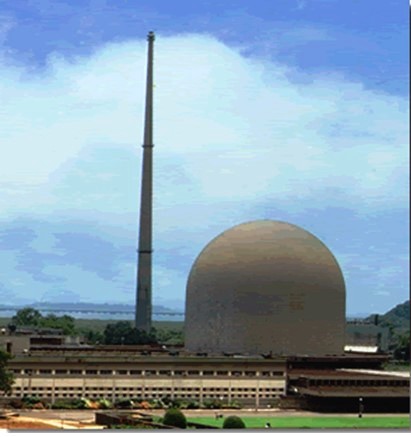
Compare it with the characteristics of the Shiv Lingam above
- The structure of divided into 2 parts, with a dome shaped reactor resting on the base
- Water is used as a coolant in nuclear reactors, to stop it from exploding and creating destruction (Shiv- Lord of destruction?)
- Water around nuclear reactors is not considered safe for consumption, since it is charged with the radioactive waste
It is not very difficult to see that the Shiv Lingam is actually a representation of some kind of a source of energy, like nuclear energy. The idea of light (again a form of energy) then fits the logic as well.
The use of Bilva Patram also sounds logical, since it is established by modern science that the Bael Leaves are capable of absorbing radiations. The symbolic Ganges and Moon on the head of Lord Shiva also point towards the cooling qualities.
There is another way that a Shiv Lingam can be looked at.
For this we again need to go back to our school days, when we studied the Atomic Model, as proposed by Niels Bohr and Ernest Rutherford (Also known as Bohr’s Model).
As per the model, an Atom is made up of Electrons, Protons and Neutrons, and they are bound by strong electromagnetic forces. These atoms make up a molecule, which is the basic building block of the entire universe.
Now the Holy Trinity of Hindu Gods can be related to the atomic model in the following way-
Brahma=Electron – Depicted in a negative manner, and always outside of the core of the atom
Vishnu=Proton- Positive, nurturer and protector of the universe
Mahesh=Neutron- Neutral, detached from materialistic world
Shakti=Electromagnetic Field- The peedam or the circular base of the Shiv Ling, which has 3 grooves along the circumference

There is also a theory that Mount Kailash is actually the biggest nuclear reactor, with many lakes at the base to serve as the cooling mechanism. One such water body is the Rakshas Tal.
The story around it is that King Ravan had everything in Lanka, still wanted the Shiv Lingam because it was a source of immense energy. When he tried to take it, he had to take a dip in the lake nearby, since the effort to take the Shiv lingam was too much.
This lake came to be called as Rakshas Tal or Ravan Tal and it is still believed that anybody who takes a bath in the lake will turn into a Rakshas (Demon). This is symbolic.
A more scientific way to look at this is that the water is contaminated with heavy elements, and even today no aquatic plants or fish can survive in the lake.

It may be difficult to blindly accept all the rationales. But they are definitely a lot more mature and practical views, than simply looking at the Shiv Lingam as a mere sexual object.
When Pandit Jawaharlal Nehru inaugurated the Bhakra Nangal Project, he had said that dams, steel plants, power plants, research institutes are the Temples of Modern India.
The importance of scientific advancement cannot be more relevant in today’s times of ever diminishing oil and coal reserves as a source of energy to the world.
Perhaps, it is about time that we learn to look beyond mere symbolism and rituals used by our ancestors and dig into their real meaning, stop to merely rote learn and recite the mantras and instead get an understanding behind the Sanskrit words . Stop to visit temples like we used to, and look at them in a totally different way?
In the series, I will try to look beyond the fables behind each Shiv Lingam I visited. I know I will go wrong many times, because I am not even a novice in this, leave alone being an expert. But I will be happy that I at least tried to look at things, the way our wise ancestors really wanted us to.

